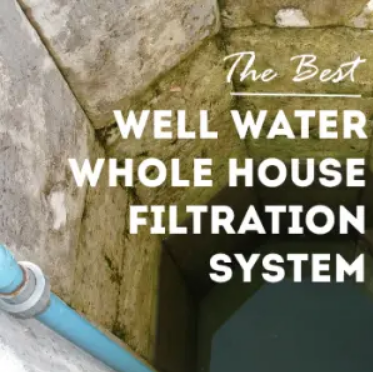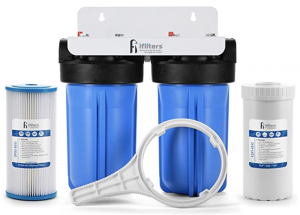Improving Your Private Well Water Quality
September 17, 2020

Drinking water conditions have significant impacts on people’s everyday life, especially in third world countries where access to safe drinking water is minimal. Surface water often is the only information; thus, water contaminations are hard to avoid. Statistics show that these diseases cause ninety percent of all deaths of children under five years old in developing countries, where children’s resistance to infections is low. Although municipal water in developed countries already falls into the World Health Organization (WHO) safe drinking water standards, water filters are still commonly used to improve taste or eliminate undesired matters. The Best Well Water Filter various types of filters have been designed to be more suitable in third world countries, but the cost is still not satisfactory, and many products have imported, which further adds to the price.
Reverse Osmosis Filters

Reverse Osmosis water filters have typically been used to improve drinking and cooking water quality in households. It is one of the most acceptable water filtration methods and reduces almost all organic and inorganic chemicals, bacteria, microorganisms, salt, metals, and particulates found in contaminated water. It also improves tastes, odour, and appearance. Pre and post filtrations have usually combined in a reverse osmosis filtration system.
Slow Sand Filters
Slow sand filtration systems have already been used in many developing countries, and some developed countries such as the UK also use slow sand filters to treat the water supply. Slow sand filters have been constructed with a fine sand bed as the filtration media and gravel to support the sand. Slow sand filters can only filter water up to a certain turbidity level since water with high turbidity clogs up the filter bed quickly. Slow sand filters are very clear at removing heavy metals, and it is often combined with activated carbon to remove organic material and improve odour and taste.
Activated Carbon Filters
Carbon is known as a popular absorbent of impurities. Activated carbon is processed carbon with a slightly positive charge added to it and is more attractive to chemicals and pollutants. It is extremely-porous, thus providing a high surface area to volume ratio, which increases the absorption rate. Because of this property, activated carbon has commonly used in water treatment systems.
Ceramic Filters
The ceramic filter is one of the most economical filtration methods, and it is already widely used in some third world countries. The ceramic filter blocks anything larger than a water molecule, allowing only water to pass through the pores. Candle ceramic filters are sometimes filled with activated carbon to increase water purity. The flow rate of ceramic water filters has controlled by surface area and the number of additives. Ceramic filters have been made with clay and combustible additives. All materials are inexpensive and can be easily found.
Conclusion
Testing for filter effectiveness should be conducted with the recommended additive, rice husks, and surface water from different third world countries. Flow rate testing should be conducted where necessary to achieve maximum flow rate and highest effectiveness. It has also recommended applying a coat of silver nitrate solution onto the ceramic surface to reduce bacteria further. Since boiling water is the most effective technique to disinfect any dangerous bacteria and viruses, it has also recommended boiling water after filtering to ensure that it is safe to drink.
